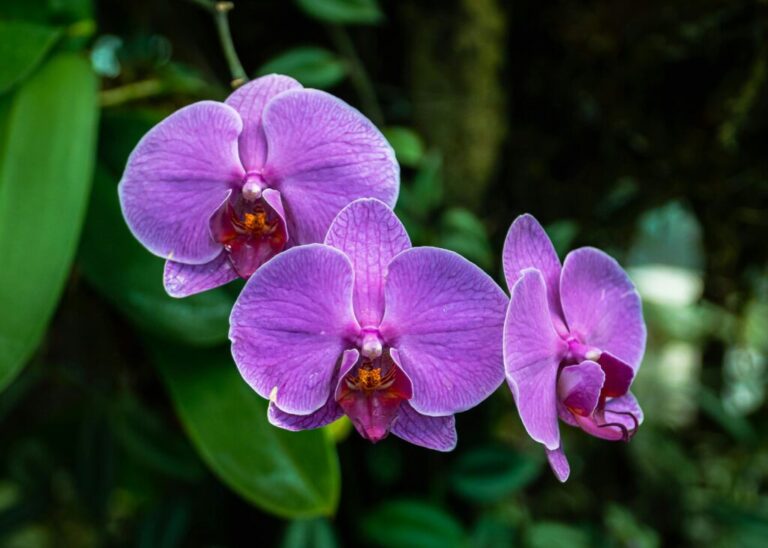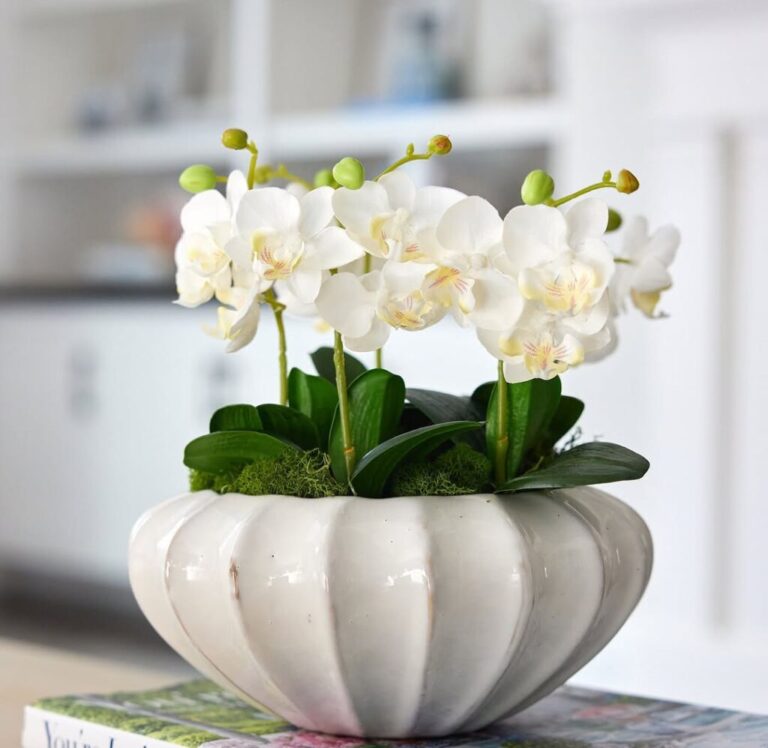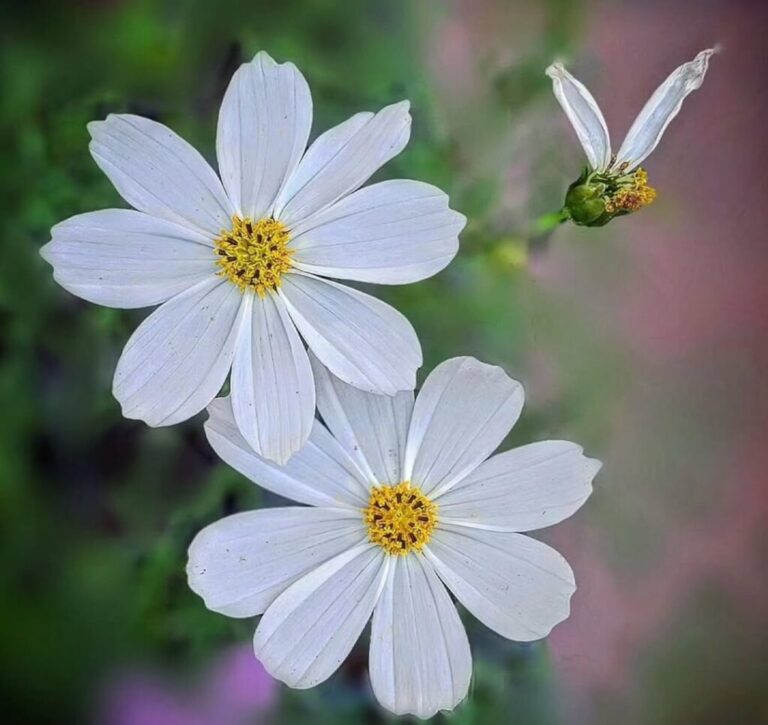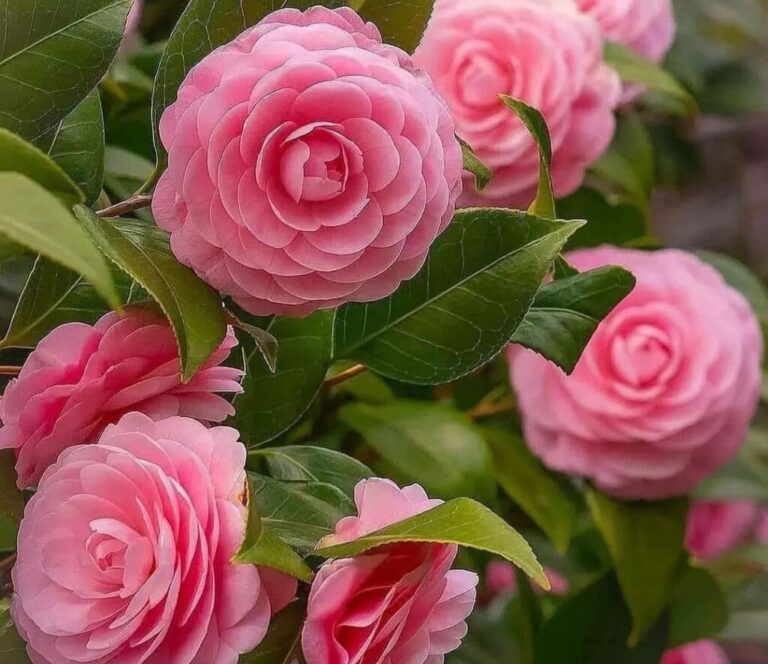Fiddle Leaf Fig (Ficus lyrata) is one of the most popular indoor plants, loved for its large, glossy green leaves. However, many plant owners struggle with brown spot on Fiddle Leaf Fig, which can quickly take away from its beauty. One day, your plant looks vibrant and healthy, and the next, you notice unsightly blemishes spreading across the leaves.
Brown spots on Fiddle Leaf Fig can appear for several reasons—overwatering, underwatering, fungal infections, pests, or even improper lighting. If left untreated, these spots can lead to yellowing, leaf drop, and long-term damage to your plant. The good news? Most of these issues are fixable with the right care.
In this guide, we’ll go over the 10 worst mistakes that lead to brown spots on Fiddle Leaf Fig—and the best solutions to bring your plant back to life. Whether the spots are dry, mushy, or rapidly spreading, you’ll learn how to identify the cause and take action before it’s too late.

Fiddle Leaf Fig (Ficus lyrata)
| Feature | Details |
|---|---|
| Common Name | Fiddle Leaf Fig |
| Botanical Name | Ficus lyrata |
| Plant Type | Evergreen, Indoor/Outdoor Tree |
| Mature Size | 6–10 ft (indoor), up to 50 ft (outdoor) |
| Light Needs | Bright, indirect light; tolerates some direct morning sun |
| Watering | Water when the top 1–2 inches of soil are dry |
| Soil Type | Well-draining, peat-based soil mix |
| Humidity | Prefers 40–60%; benefits from misting or a humidifier |
| Temperature | 65–75°F (18–24°C); avoid cold drafts |
| Fertilization | Monthly during spring and summer with balanced liquid fertilizer |
| Toxicity | Toxic to pets and humans if ingested |
| Common Issues | Brown spots, leaf drop, root rot, pests (spider mites, scale) |
| Propagation | Stem cuttings in water or soil |
| Repotting | Every 2–3 years or when root-bound |

1. Overwatering
Mistake:
One of the biggest causes of brown spots on fiddle leaf figs is overwatering. If the soil stays soggy for too long, the roots begin to rot, leading to dark brown or black spots on the leaves. These spots typically start at the base of the leaf and spread outward. Overwatering also reduces oxygen availability to the roots, further weakening the plant and making it susceptible to bacterial infections. You may also notice a foul smell coming from the soil, indicating root rot. If not corrected, prolonged overwatering can cause leaves to turn yellow and drop off completely.
Solution:
Check the soil before watering – only water when the top 2 inches are dry.
Use well-draining soil with a mix of peat, perlite, and pine bark.
Ensure adequate drainage –Make sure the pot you use has drainage holes.
Water less frequently in winter since the plant’s growth slows down.
Avoid using pots without drainage holes as they can lead to water buildup.
2. Underwatering
Mistake:
On the other hand, not watering enough can also cause brown spots. If your fiddle leaf fig is dehydrated, the leaves will develop dry, crispy brown edges and may start curling. Underwatering can happen when you don’t stick to a consistent watering routine or if the environment is too dry. The plant relies on consistent moisture to function properly, and when it lacks water, it struggles to transport nutrients to the leaves. This results in a weak, stressed plant that becomes more susceptible to other problems such as pest infestations and nutrient deficiencies.
Solution:
Check soil moisture regularly using your finger or a moisture meter.
Water thoroughly until _extra water is removed from the pot’s bottom.
Increase watering frequency in warm seasons when the plant is actively growing.
Monitor how quickly the soil dries out to adjust your watering schedule.
3. Poor Drainage
Mistake:
Even if you water correctly, your fiddle leaf fig can still suffer if the soil doesn’t drain well. When excess water stays trapped, it suffocates the roots and leads to brown spots. Poor drainage can occur due to using the wrong type of soil or a pot without sufficient drainage holes. Compacted soil that retains too much moisture can also contribute to this issue. If your plant sits in stagnant water for too long, root rot can develop, which ultimately leads to leaf damage and brown spots spreading across multiple leaves.
Solution:
Repot in a container with drainage holes.
Use a well-draining soil mix in order to avoid retaining water.
Avoid letting your plant sit in standing water in a saucer.
Consider adding perlite or sand to improve soil aeration.
4. Low Humidity
Mistake:
Fiddle leaf figs thrive in a humid environment, and if the air is too dry, the edges of the leaves can develop brown spots. This is especially common during winter when indoor heating reduces humidity. Dry air causes excessive moisture loss through the leaves, making them dehydrated and brittle. If the plant continuously loses more water than it absorbs, the leaves will weaken, curl, and develop brown edges. Additionally, dry conditions make the plant more vulnerable to pests like spider mites, which thrive in low humidity environments and can further damage the leaves.
Solution:
Increase humidity by placing a pebble tray filled with water under the pot.
Use a humidifier to maintain humidity levels between 50–60%.
Mist the leaves occasionally, but avoid overdoing it to prevent fungal issues.
Group plants together to naturally increase the surrounding humidity.
5. Direct Sunlight Burns
Mistake:
Fiddle leaf figs love bright, indirect sunlight, but too much direct sunlight can scorch their leaves, causing light brown or tan patches. If your plant is placed near a south-facing window without any filter, the harsh afternoon sun can burn the delicate leaves. This usually results in irregularly shaped brown spots that appear faded or dry. Over time, these damaged leaves may turn brittle and fall off. Sunburn occurs more frequently in summer when the sun’s intensity is stronger, especially if your plant has recently been moved from a lower light environment to a bright spot too quickly.
Solution:
Place your plant near a bright window with indirect light.
Avoid direct afternoon sun, especially in summer.
Use sheer curtains to filter harsh sunlight if necessary.
Gradually introduce your plant to brighter light to prevent shock.
6. Nutrient Deficiency
Mistake:
A lack of essential nutrients, especially nitrogen and magnesium, can cause weak, spotted leaves. Fiddle leaf figs need regular feeding to maintain their deep green color. Without enough nutrients, the leaves start to lose their vibrancy, and brown patches may develop due to stress. If your plant is growing in old or depleted soil, it may not receive the necessary minerals for proper development. Yellowing between the veins or slow growth is often a sign of nutrient imbalance. If left unaddressed, the plant will continue to weaken, leading to stunted growth and further brown spot formation.
Solution:
Feed your plant with a balanced liquid fertilizer (such as 10-10-10 or 3-1-2) every 4–6 weeks.
Use a slow-release fertilizer for a steady supply of nutrients.
Ensure proper soil pH (5.5–7) to help nutrient absorption.
Flush the soil occasionally to remove excess salt buildup from fertilizers.
7. Pest Infestation
Mistake:
Pests like spider mites, scale, and mealybugs suck the sap from fiddle leaf fig leaves, causing brown spots, yellowing, and leaf drop. These tiny insects are often hard to spot at first but can quickly multiply and weaken the plant. Spider mites, in particular, thrive in dry conditions and leave behind small brown or yellow dots, often accompanied by fine webbing on the leaves. Scale insects appear as small brown bumps along the stems and veins, while mealybugs look like tiny white cottony clusters. If left untreated, these pests can severely damage your plant, causing leaf discoloration and eventual death.
Solution:
- Check the undersides of leaves regularly for pests.
- Wipe leaves with a damp cloth to remove dust and small insects.
- Treat infestations with neem oil or insecticidal soap.
- Quarantine new plants before placing them near your fiddle leaf fig.
Fiddle Leaf Fig Brown Spot Care
| Task | Frequency | Details |
|---|---|---|
| Inspect Leaves | 2–3 times per week | Check for new brown spots, yellowing, or wilting. Look at both sides of leaves. |
| Adjust Watering | Weekly (as needed) | Water only when the top 1–2 inches of soil are dry. Avoid overwatering. |
| Improve Drainage | Monthly | Ensure pot has drainage holes and use well-draining soil. Repot if needed. |
| Check Humidity | Weekly | Maintain 40–60% humidity. Use a humidifier or mist if needed. |
| Treat Fungal Infections | As soon as spots appear | Remove affected leaves, reduce watering, and apply a fungicide if needed. |
| Inspect for Pests | Weekly | Look for spider mites, thrips, or scale insects. Treat with neem oil or insecticidal soap if found. |
| Ensure Proper Lighting | Daily | Place in bright, indirect light. Avoid direct sunburn or low-light stress. |
| Fertilize | Monthly (during growing season) | Use a balanced liquid fertilizer to promote healthy growth. |
| Rotate Plant | Every 2 weeks | Ensure even light exposure and prevent leaning. |
| Clean Leaves | Monthly | Wipe leaves with a damp cloth to remove dust and improve photosynthesis. |
8. Fungal or Bacterial Infection
Mistake:
Brown spots that spread rapidly and have a yellow halo may indicate a fungal or bacterial infection caused by excessive moisture and poor air circulation. Fungal diseases like leaf spot can develop if water consistently sits on the leaves, leading to damp conditions that encourage fungal growth. Bacterial infections, on the other hand, can result from contaminated tools, infected plants nearby, or improper care. Infected leaves often show black or brown water-soaked spots that grow larger over time. If not managed quickly, the infection can spread to multiple leaves, weakening the plant and eventually leading to severe leaf drop.
Solution:
- Remove infected leaves immediately to prevent spread.
- Improve air circulation by placing your plant in a well-ventilated area.
- Water at the base of the plant instead of overhead to keep leaves dry.
- Use a copper-based fungicide if necessary.
- Avoid misting if fungal issues are present to reduce excess moisture.
9. Temperature Stress
Mistake:
Fiddle leaf figs are susceptible to abrupt temperature changes.Exposure to cold drafts, air conditioning vents, or heating units can cause stress, leading to brown spots and leaf drop. If your plant is placed near a frequently opened door in winter or close to a heating vent in summer, the rapid temperature fluctuations can shock the leaves. Extreme cold can cause leaves to develop dark brown, almost black, patches, while heat stress may result in dry, crispy spots. Keeping the plant in an environment where temperatures fluctuate too much will weaken it over time, making it prone to additional health issues.
Solution:
- Keep the plant in a stable temperature range (60–75°F).
- Avoid placing it near drafty windows, radiators, or AC vents.
- Move your plant gradually when changing locations to reduce stress.
- Use curtains or blinds to buffer against cold or heat exposure.
Timetable to Cure Brown Spots on Fiddle Leaf Fig
| Day | Task | Details |
|---|---|---|
| Day 1 | Identify the Cause | Examine the pattern of brown spots (center-out, edge-in, scattered) and check soil moisture, roots, and leaf texture. |
| Day 2 | Adjust Watering | If overwatered, let the soil dry out before watering again. If underwatered, provide a deep, slow soak. Stick to a schedule (1 cup per foot weekly). |
| Day 3 | Inspect Roots & Repot (If Needed) | If root rot is present, trim mushy roots, apply a root supplement, and repot in fresh, well-draining soil. |
| Day 4 | Improve Drainage | Ensure the pot has drainage holes and use a well-draining mix (coco coir, perlite, bark). Avoid standing water in the saucer. |
| Day 5 | Check Humidity & Adjust | If the air is too dry, increase humidity with a humidifier, pebble tray, or misting. Maintain 30-50% humidity. |
| Day 6 | Fertilize (If Nutrient Deficiency Suspected) | Use a balanced liquid fiddle leaf fig fertilizer (3:1:2 NPK ratio) every 2-4 weeks. |
| Day 7 | Prune Damaged Leaves | Trim affected leaves at a 45-degree angle using sterilized pruning shears to prevent further energy loss. |
| Day 8 | Check for Pests & Treat If Needed | Look for mealybugs, spider mites, or scales. Use neem oil or insecticidal soap if pests are found. |
| Day 9 | Apply Preventative Leaf Care | Wipe leaves with a damp cloth or leaf shine wipes to remove dust and improve photosynthesis. |
| Day 10-14 | Monitor & Maintain Care Routine | Observe for new growth, fewer brown spots, and healthy leaf texture. Adjust watering and humidity as needed. |
10. Repotting Shock
Mistake:
If you recently repotted your fiddle leaf fig and noticed brown spots, it may be experiencing transplant shock. This happens when the roots are disturbed too much during repotting. The sudden change in soil conditions and exposure to new environmental factors can cause stress, leading to leaf browning, wilting, or even leaf drop. Plants need time to adjust to their new pot, especially if their roots were pruned or broken during the process. If the plant is not handled with care, it can take weeks or even months to fully recover, slowing its growth and making it more susceptible to other problems.
Solution:Minimize root disturbance when repotting.
Use fresh, well-draining soil to support recovery.
Keep the plant’s care routine consistent to help it adjust.
Avoid fertilizing immediately after repotting to prevent additional stress.
Brown spots on your fiddle leaf fig can be worrying, but they are not a death sentence! By identifying the cause—whether it’s watering issues, pests, poor light, or temperature stress—you can take the right steps to fix it. Fiddle leaf figs are resilient plants, and with the right care, they can bounce back from most problems. The key is to act quickly and stay consistent with your plant care routine.
FAQs: Brown Spot on Fiddle Leaf Fig
What causes brown spot on Fiddle Leaf Fig?
Brown spot on Fiddle Leaf Fig is usually caused by overwatering, poor drainage, fungal infections, or bacterial leaf spot. If the soil stays too wet, root rot develops, leading to brown spot on Fiddle Leaf Fig. Low humidity, sunburn, and pest infestations like spider mites can also contribute to brown spot on Fiddle Leaf Fig.
How do I treat brown spot on Fiddle Leaf Fig caused by overwatering?
To fix brown spot on Fiddle Leaf Fig due to overwatering, let the soil dry out completely before watering again. Check if the pot has proper drainage, and remove any excess water from the saucer. If the brown spot on Fiddle Leaf Fig is severe, repot the plant in fresh, well-draining soil. Trim off affected leaves to prevent further spread of brown spot on Fiddle Leaf Fig.
Can low humidity cause brown spot on Fiddle Leaf Fig?
Yes, low humidity can lead to brown spot on Fiddle Leaf Fig, especially if the air is too dry. Fiddle Leaf Figs thrive in humidity levels of 40-60%. If your home has dry air, use a humidifier or mist the leaves to prevent brown spot on Fiddle Leaf Fig. You can also place a pebble tray with water near the plant to help maintain moisture.
What is the best way to prevent brown spot on Fiddle Leaf Fig?
Preventing brown spot on Fiddle Leaf Fig requires proper care. Water only when the top inch of soil is dry, ensure good air circulation, and maintain humidity around 50%. Keep your plant away from direct sunlight, cold drafts, and heat sources to avoid stress that can cause brown spot on Fiddle Leaf Fig. Regularly inspect for pests and clean the leaves to prevent fungal infections.
Does too much direct sunlight cause brown spot on Fiddle Leaf Fig?
Yes, excessive direct sunlight can cause brown spot on Fiddle Leaf Fig. If the leaves are exposed to harsh sunlight for long periods, they can develop scorched, dry patches. Move your plant to a spot with bright, indirect light to avoid sunburn-related brown spot on Fiddle Leaf Fig.
Should I cut off leaves with brown spot on Fiddle Leaf Fig?
Yes, removing damaged leaves helps prevent brown spot on Fiddle Leaf Fig from spreading. Use clean, sterilized scissors to trim affected leaves. However, if the brown spot on Fiddle Leaf Fig is minimal, you can leave the leaf attached and focus on fixing the underlying issue.
How do I stop brown spot on Fiddle Leaf Fig from spreading?
To stop brown spot on Fiddle Leaf Fig from spreading, first identify the cause. If it’s a fungal or bacterial issue, apply a fungicide or antibacterial spray. Prevent water from getting on the leaves and increase air circulation.Adjust watering habits to prevent future brown spot on Fiddle Leaf Fig.
Can pests cause brown spot on Fiddle Leaf Fig?
Yes, pests like spider mites, mealybugs, and scale insects can cause brown spot on Fiddle Leaf Fig. These pests suck sap from the leaves, leading to brown discoloration. If you notice tiny bugs or webbing, wipe the leaves with insecticidal soap or neem oil to prevent brown spot on Fiddle Leaf Fig from worsening.
What type of water should I use to prevent brown spot on Fiddle Leaf Fig?
Using tap water with high chlorine or fluoride can contribute to brown spot on Fiddle Leaf Fig. Use distilled or filtered water to avoid this.If using tap water, let it sit overnight to allow chemicals to dissipate before watering your plant to avoid brown spot on Fiddle Leaf Fig.
Can fertilizer cause brown spot on Fiddle Leaf Fig?
Yes, over-fertilizing can cause brown spot on Fiddle Leaf Fig due to salt buildup in the soil. This leads to leaf burn and brown edges. To avoid brown spot on Fiddle Leaf Fig from fertilizer, use a diluted, balanced fertilizer once a month and flush the soil occasionally to remove excess salts.
Does poor drainage contribute to brown spot on Fiddle Leaf Fig?
Yes, poor drainage is a major cause of brown spot on Fiddle Leaf Fig. If water sits in the soil too long, root rot develops, leading to brown patches on leaves. Ensure your pot has drainage holes and use a well-draining soil mix to prevent brown spot on Fiddle Leaf Fig.
How does repotting help fix brown spot on Fiddle Leaf Fig?
Repotting can help treat brown spot on Fiddle Leaf Fig if the soil is retaining too much moisture or has fungal contamination. Use fresh, well-draining soil and a pot with drainage holes. After repotting, allow the plant to adjust and monitor for any further brown spot on Fiddle Leaf Fig.
Can cold temperatures cause brown spot on Fiddle Leaf Fig?
Yes, cold drafts and sudden temperature changes can lead to brown spot on Fiddle Leaf Fig. Keep your plant in a stable environment, away from air conditioners, heaters, and open windows. Fiddle Leaf Figs prefer temperatures between 65-75°F to avoid brown spot on Fiddle Leaf Fig.
How long does it take for brown spot on Fiddle Leaf Fig to heal?
The time it takes for brown spot on Fiddle Leaf Fig to heal depends on the severity of the issue. If you address the root cause, new growth will appear healthy, but the affected leaves will not recover. Preventing further brown spot on Fiddle Leaf Fig requires consistent care and monitoring.
Can I use neem oil to treat brown spot on Fiddle Leaf Fig?
Yes, neem oil is effective in preventing brown spot on Fiddle Leaf Fig caused by pests or fungal infections. Dilute neem oil with water and spray it on the leaves every two weeks. This helps stop pests and prevents brown spot on Fiddle Leaf Fig from worsening.








